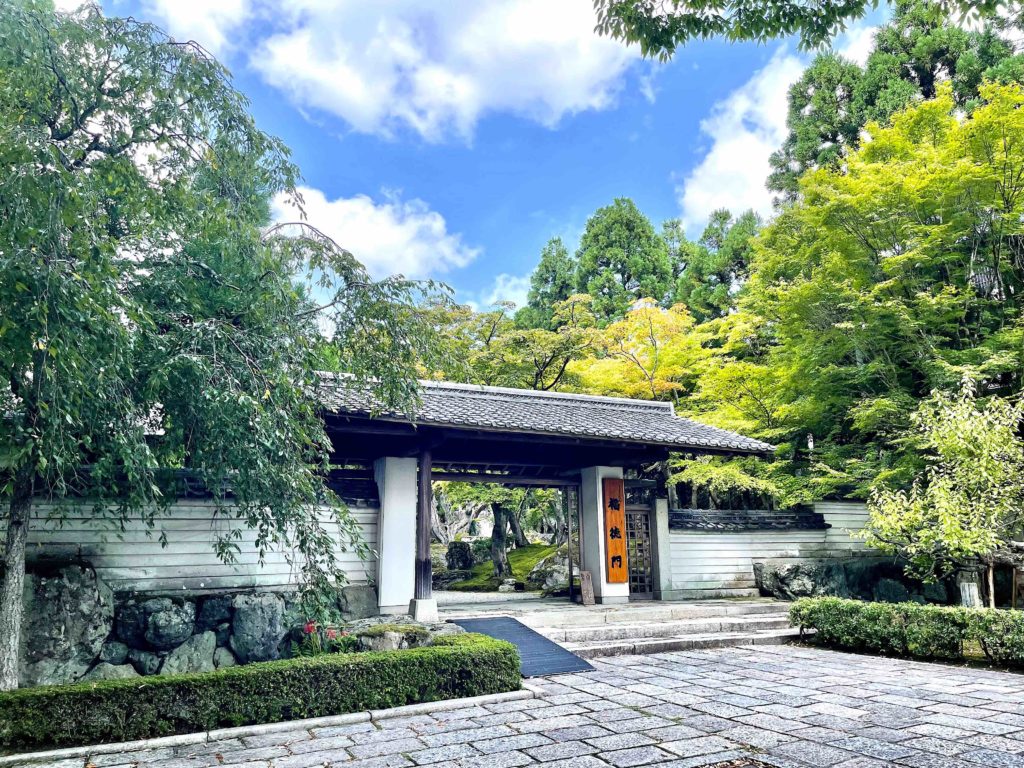In this third edition, I visited Shouzan Garden within Shouzan Resort, also home to the workshop that creates the unique Shouzan tsumugi kimono. Dressed in an Ichin-zome kimono, I strolled through the expansive 115,000-square-meter garden, where nature, history, and artistry quietly converge.
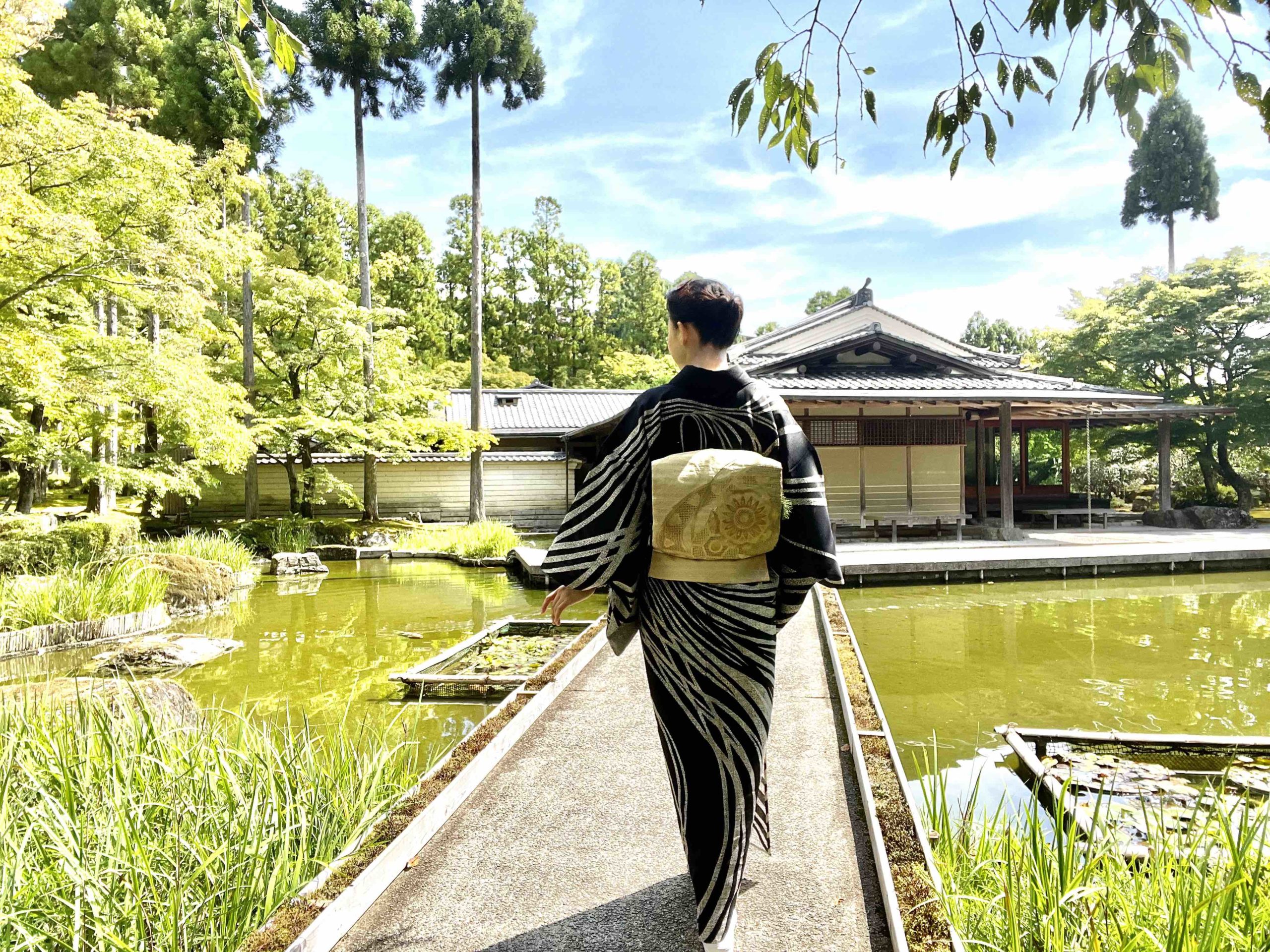
A Garden Born from Art and Philosophy
Located in Kyoto’s Rakuhoku area, at the foot of the Takagamine mountains, Shouzan Garden was designed by the late Mr. Masao Matsuyama, born in Nishijin. Guided by his belief that “the love of art is born from a beautiful environment,” he arranged the garden and relocated Japanese architecture to the site.
Wearing Shouzan’s Ichin-zome kimono, I walked among landscapes that embody centuries of culture. Ichin-zome is a dyeing technique from the Momoyama period, using a resist paste made from wheat flour that cracks as it dries. By adding dye, artisans create patterns known as “ice cracks.” Yuzen master Miyazaki Yuzensai later adapted this technique to create the paste that spread Yuzen dyeing across Japan. Though Ichin-zome nearly disappeared, it continues today in Shouzan’s distinctive kimono.
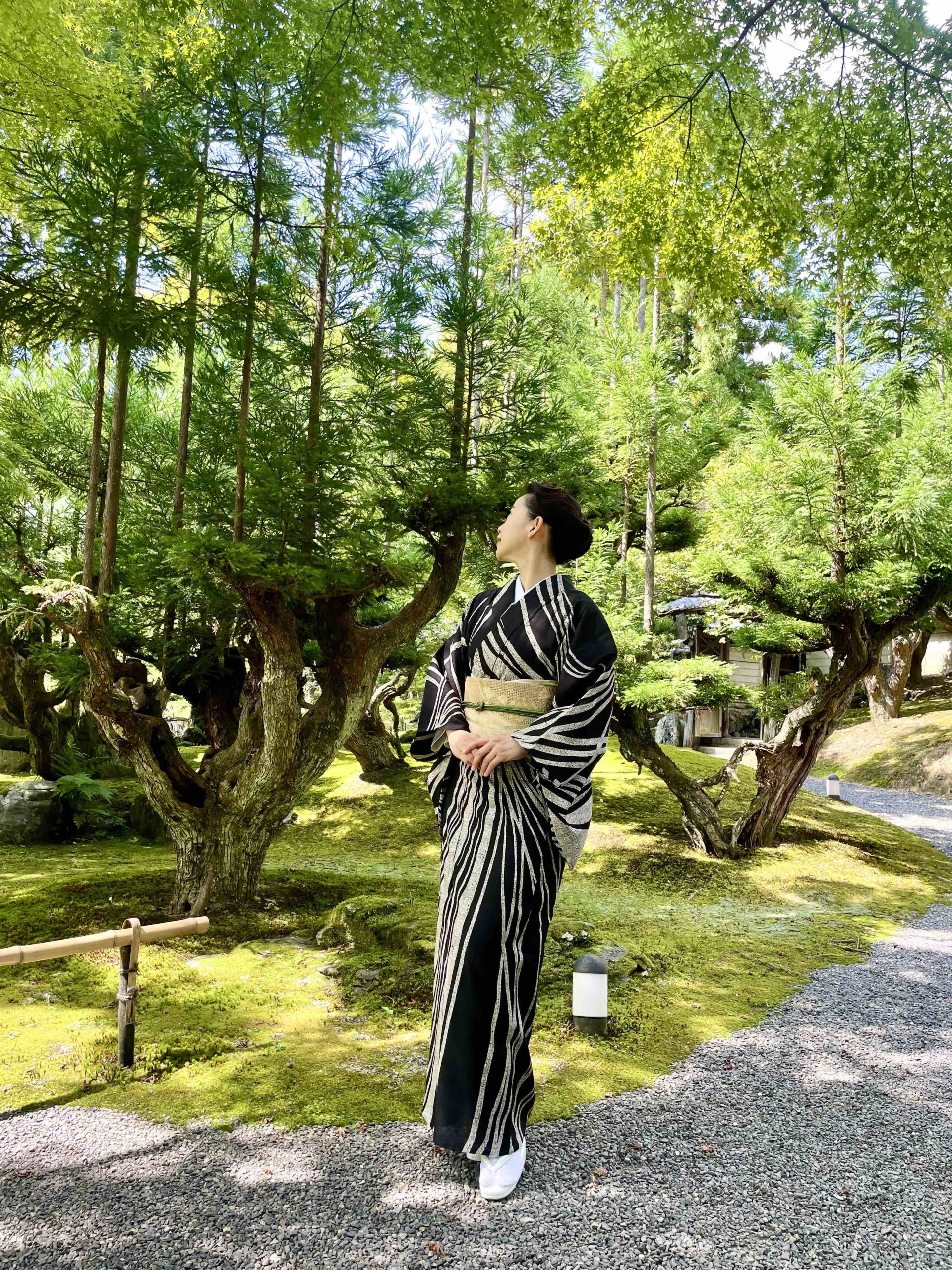
The Kamiyagawa stream, flowing through the valley, once provided water for paper used in imperial documents. Within the grounds lies a section of the “Odoi” earthworks built by Toyotomi Hideyoshi.豊臣秀吉In the early Edo period, calligrapher, potter, and tea master Hon’ami Koetsu was granted this land by Tokugawa Ieyasu, establishing the Takagamine Art Village where artists thrived in purity and tranquility.
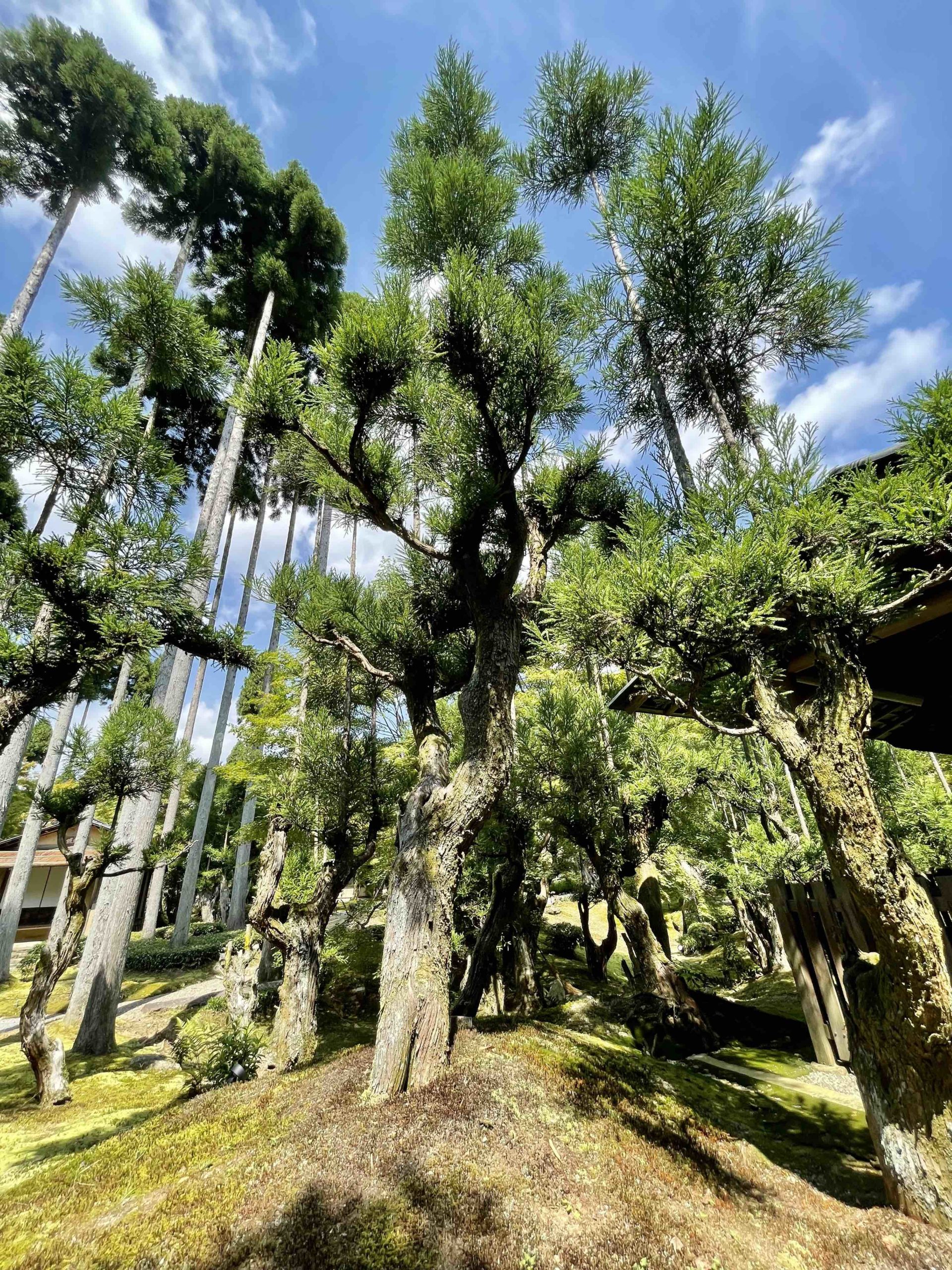
Among the highlights are 3,000 Kitayama cedars, some more than 450 years old. Seasonal beauty unfolds through plum, camellia, maple, and brilliant autumn foliage, offering visitors an ever-changing tapestry of Japanese nature.
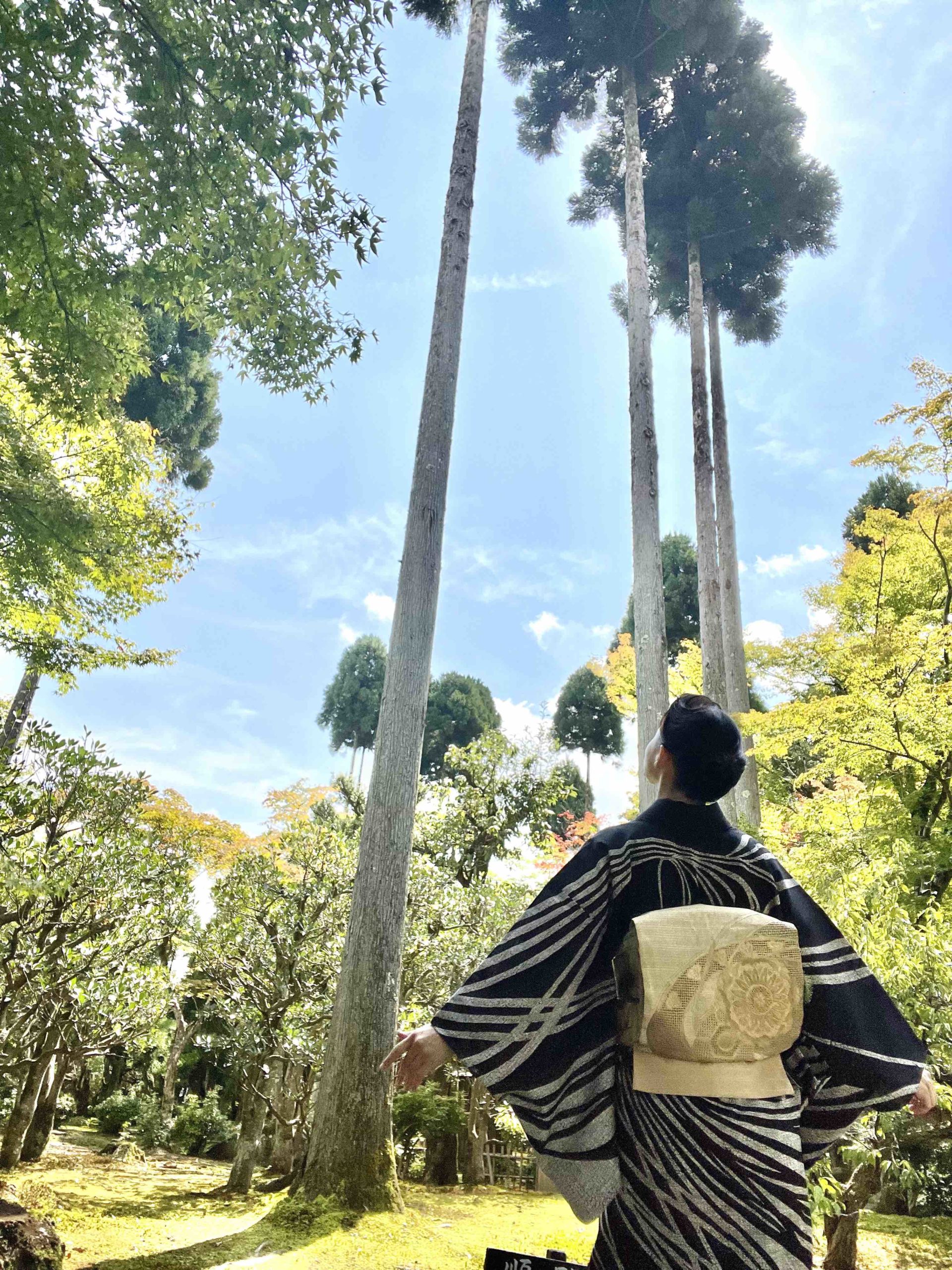
The garden includes a sake barrel tea room, relocated from the villa of a Nishijin merchant, along with other tea houses, guest halls, and residences scattered throughout the grounds.
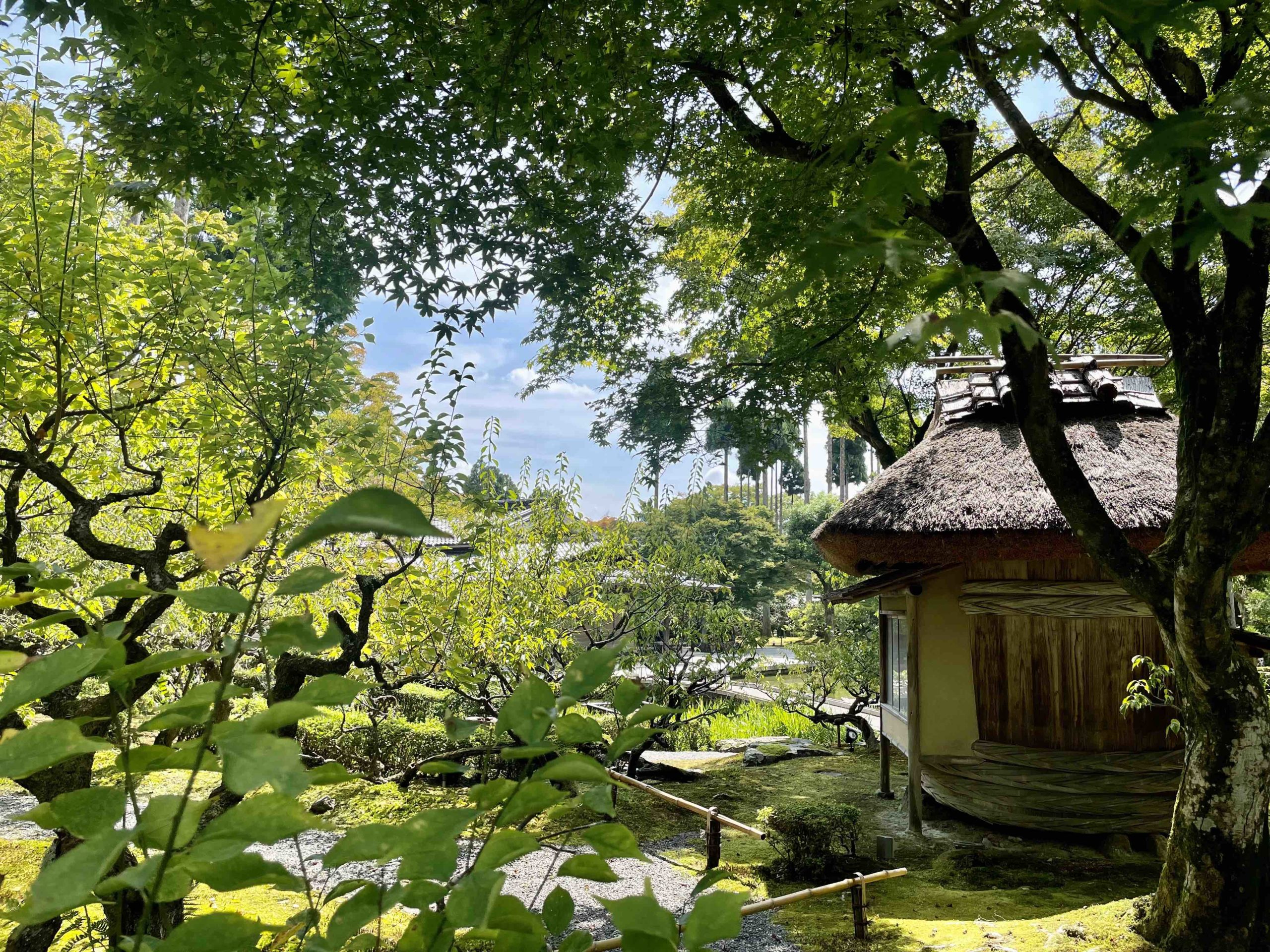
The garden includes a sake barrel tea room, relocated from the villa of a Nishijin merchant, along with other tea houses, guest halls, and residences scattered throughout the grounds.
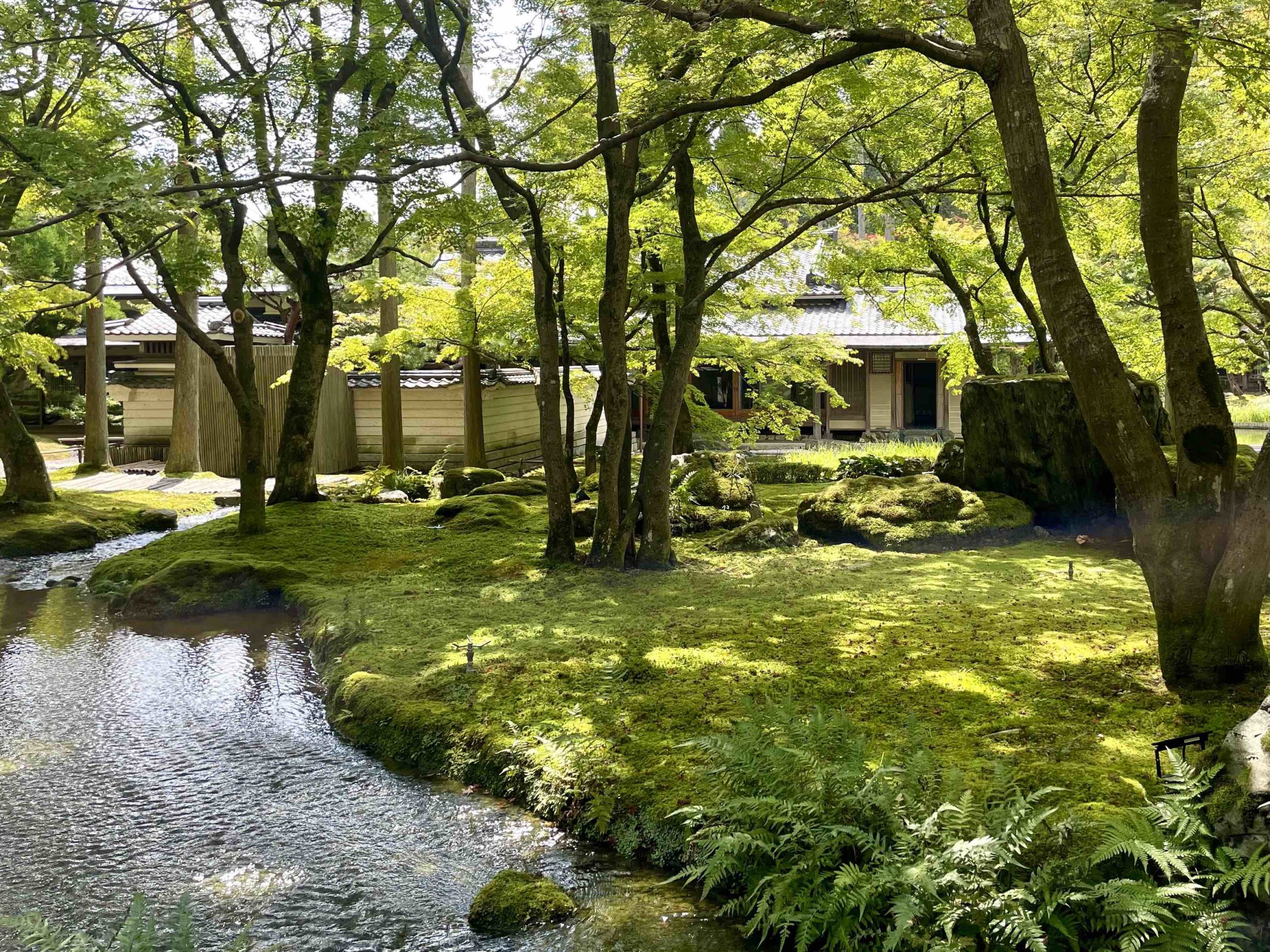
Centered around a large pond, Shouzan Garden is designed as a strolling garden with flowing streams and winding paths.
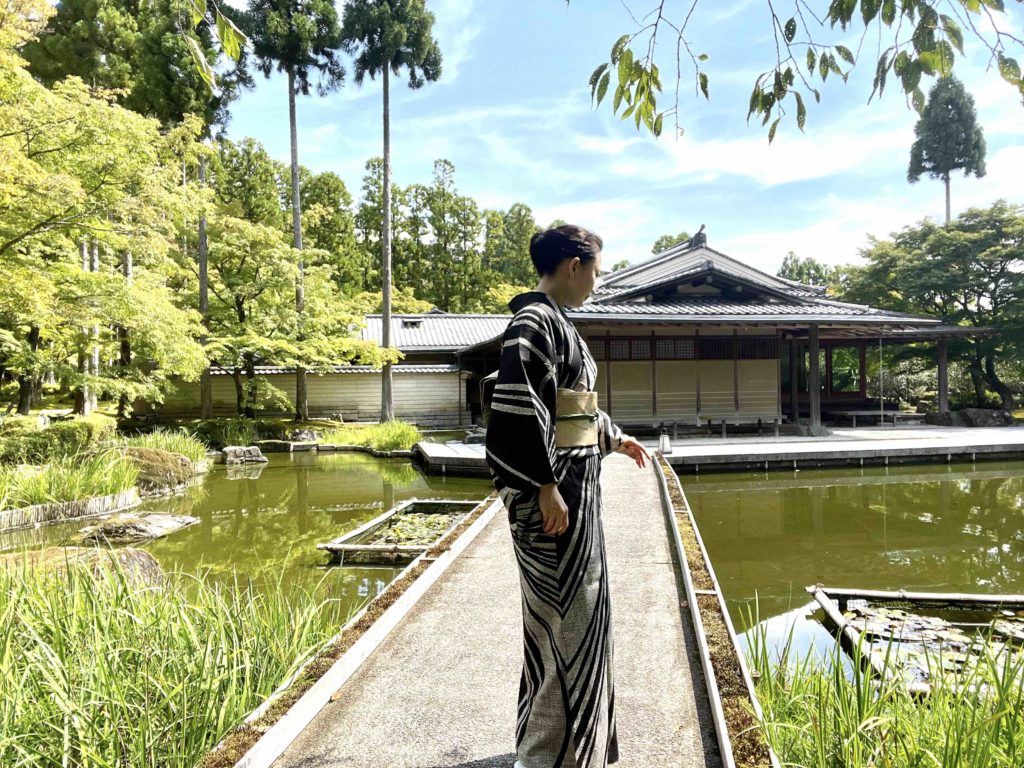
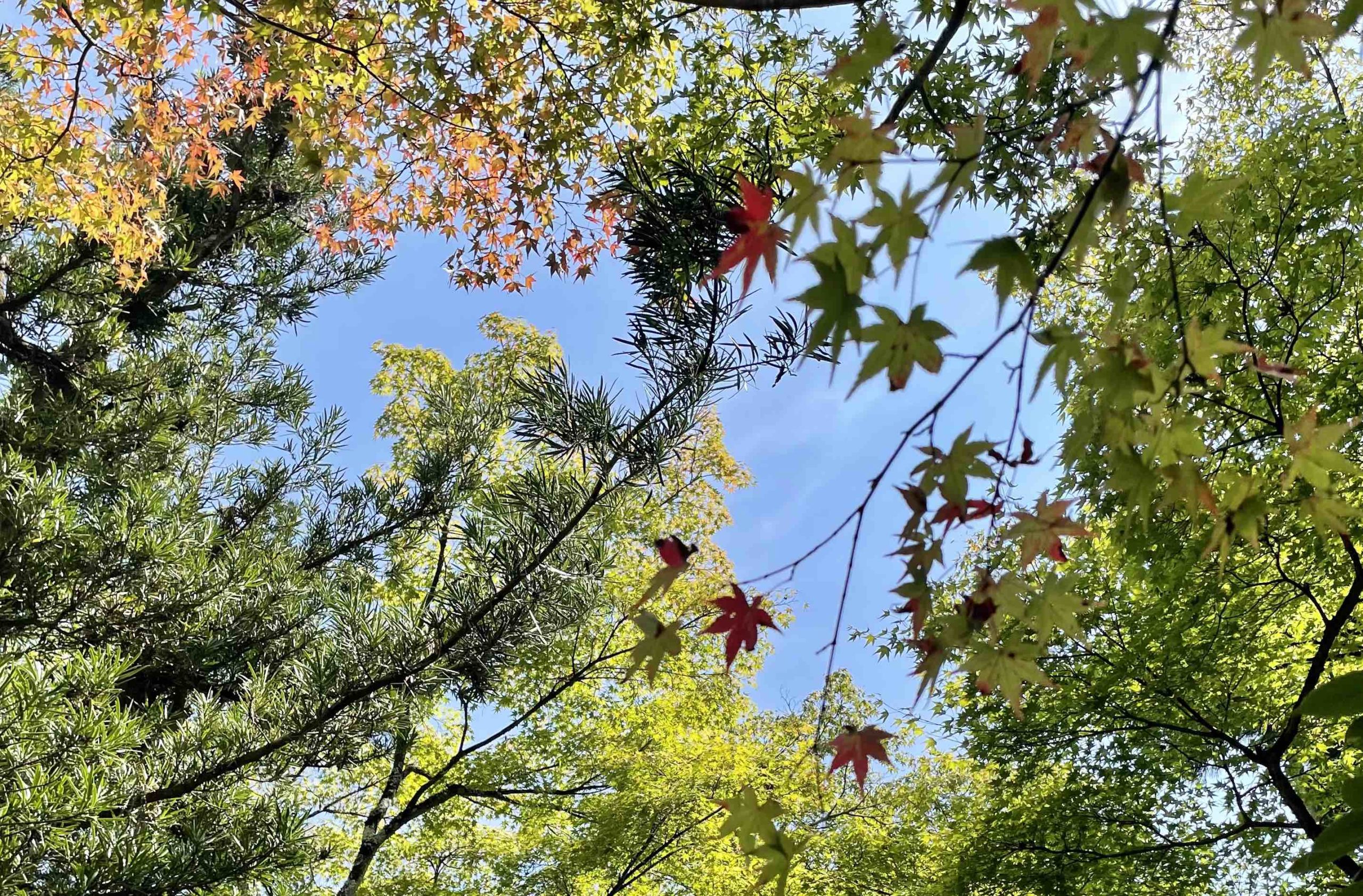
As I walked in my Ichin-zome kimono, the bold, energetic patterns seemed to harmonize with the towering cedars, making the experience a powerful encounter with Kyoto’s nature and tradition.
See Also: The Textile Encyclopedia | Kyo-Yuzen (Kyoto Prefecture)
Shouzan Garden
47 Kinugasa Kagami-ishi-cho, Kita-ku, Kyoto
(within Shouzan Resort)
<Hours> 9:00 – 17:00
<Closed> Open daily
<Admission> 500 Yen
Official Website>>
